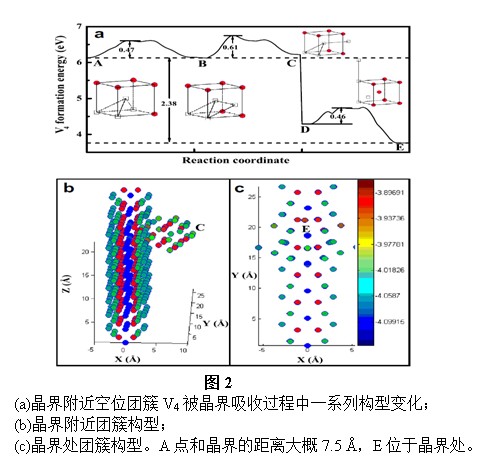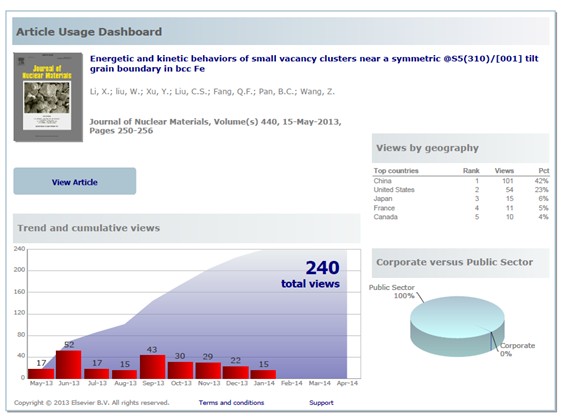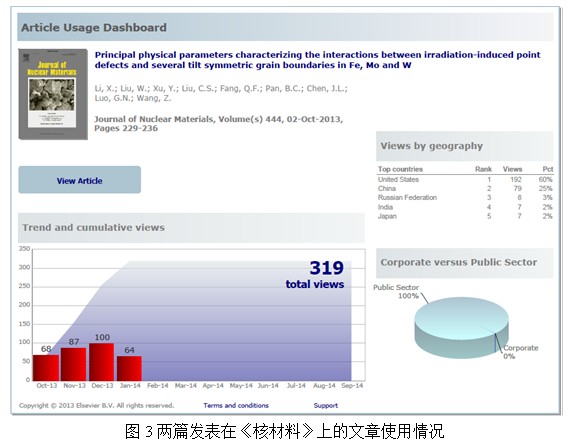



Recently, researchers from the Institute of Solid State Physics, Chinese Academy of Sciences, Hefei Institute of Materials Science, and Institute of Plasma Physics, Hefei Institute, and researchers from the Institute of Modern Physics, Chinese Academy of Sciences collaborated to simulate the radiation resistance of tungsten and iron in nanocrystalline metallic materials. New progress was made. Relevant research results were published in the fusion field journal Nuclear Fusion and the Journal of Nuclear Materials.
Irradiation damage in tungsten and its alloys is one of the important issues in fusion research. Irradiation-induced micro-defects not only degrade the material properties, but also change the retention of H/He in the matrix material. Recent studies have shown that nanocrystalline and nanoscale oxide dispersion-enhanced materials can generally reduce the accumulation of radiation defects in the matrix, thereby exhibiting better resistance to radiation damage.
However, its microscopic mechanism is not yet clear. Hefei Research Institute of Solids Research Institute researchers use molecular dynamics and static calculations to examine the role of grain boundaries in repairing nanostructured tungsten radiation damage in terms of energetics and dynamics. It was found that during the irradiation process, the interstitial atoms are preferentially absorbed by the grain boundaries relative to the vacancies, so that after the cascade collision cooling, a defect structure is formed that is rich in vacancies near the grain boundaries and localized in the height of the intergranular interior gaps. The grain boundary serves as a defect trap by reducing the formation energy and diffusion energy barriers of vacancies/gap in its vicinity. In particular, the gaps can migrate into the grain boundaries without having to overcome energy barriers near the grain boundaries.
The gaps that enter the grain boundary preferentially can be compounded with the nearby vacancies with low energy barriers and polyatomic coordination (Figure 1). At the same time, the researchers found that the grain boundary enhanced vacancies diffusion, the complex area is relatively limited (1-1.5 nm), making the volume fraction of the region smaller (a few percentage points). This shows that the two ways to increase the radiation resistance of tungsten-based materials experimentally—refining tungsten crystallites and adding nanometer small particles—can be more effective. The relevant research results are published in the magazine "Nuclear Fusion, 2013, 53, 123014".
In response to the radiation damage of the candidate structural material Ferritic/Martensitic steel, the researchers used kinetic methods of molecular dynamics, static calculation, and temperature acceleration to examine the energetics of small empty clusters near the grain boundary. Dynamic behavior. Studies have shown that grain boundaries can be used as wells for small empty clusters (containing 1 to 9 voids) in addition to wells as point defects (voids and gaps). The vacant clusters have higher activity near the grain boundaries. It is absorbed by the grain boundary through bulk diffusion, local absorption, and local intergranular diffusion (Figure 2). The relevant research results are published in the Journal of Nuclear Materials (2013, 440, 250-256).
In order to further investigate the effect of grain boundaries on the generation and evolution of radiation defects, researchers used a static calculation system to investigate the diffusion and recombination problems of vacancies/gap near some grain boundaries of tungsten, molybdenum, and iron, and obtained grain boundary and defect effects. A series of parameters: defect formation energy, segregation energy, diffusion-complex energy barrier, and corresponding range of action. These parameters provide important basic data for analyzing the radiation resistance of materials and designing new high-performance radiation-resistant materials. The results of relevant studies are published in the Journal of Nuclear Materials (2014, 444, 229-236). After the article was published, it was noticed by domestic and foreign counterparts (see the article Usage Dashboard recently provided by the Elsevier Science & Technology Journals, an edition of the Elsevier Science Journal).
Compared with mini piston vacuum pump, mini piston air pump outputs positive pressure.
Mini piston air pumps are small, compact and efficient devices that are designed to deliver a continuous and reliable supply of compressed air. These pumps are commonly used in a variety of applications, including medical equipment, laboratory instruments, aquariums, and air mattresses. Mini piston air pumps are classified based on their operating principles, design, and performance. Some of the common types of mini piston air pumps include: 1. Single-acting Piston Pump: This type of pump uses a single piston to compress the air and deliver it through the outlet. The piston moves in one direction only, and the air is drawn in through the inlet during the return stroke. 2. Mini Diaphragm Pump: This type of pump uses a flexible diaphragm to compress the air. The diaphragm moves back and forth, creating a vacuum on one side and compressed air on the other side. The vane moves in and out of a chamber, creating a continuous flow of compressed air. Mini piston air pumps can also be classified based on their performance, such as flow rate, pressure range, and power consumption. These pumps are available in different sizes and configurations to meet the specific requirements of different applications.
Mini Piston Air Pump,Vacuum Sealer Piston Pump,Freshing Keeping Box Piston Pump,Massage Air Piston Pump
Shenzhen DYX Technology Co.,Limited , https://www.dyxpump.com